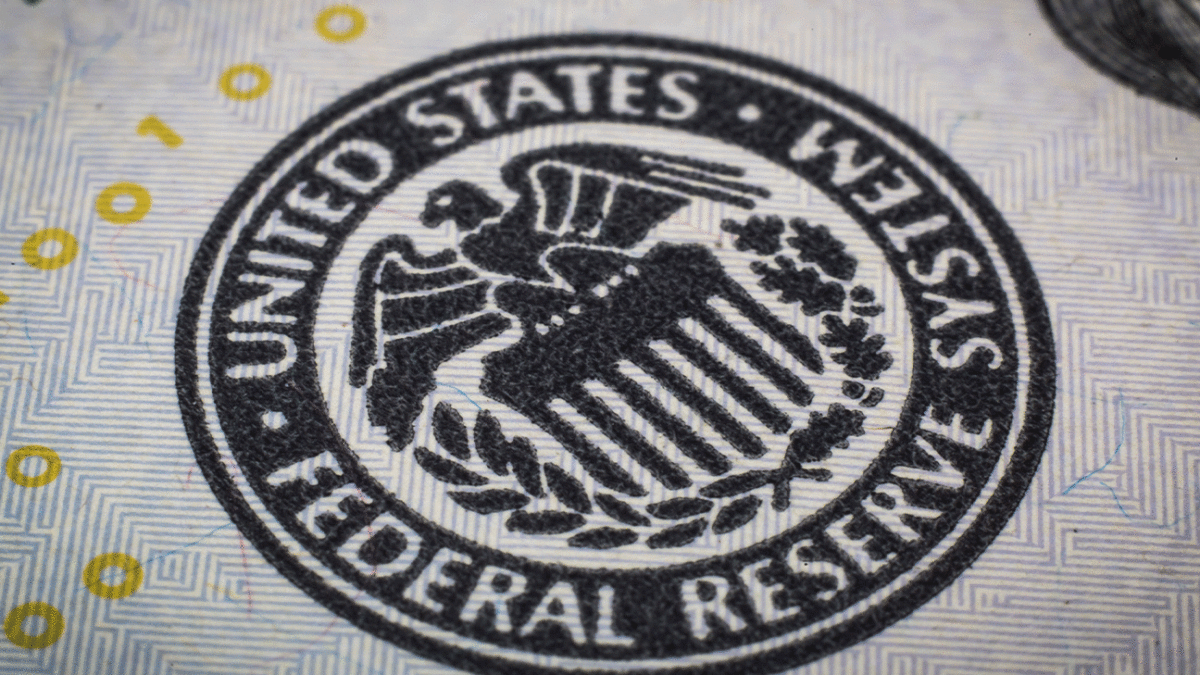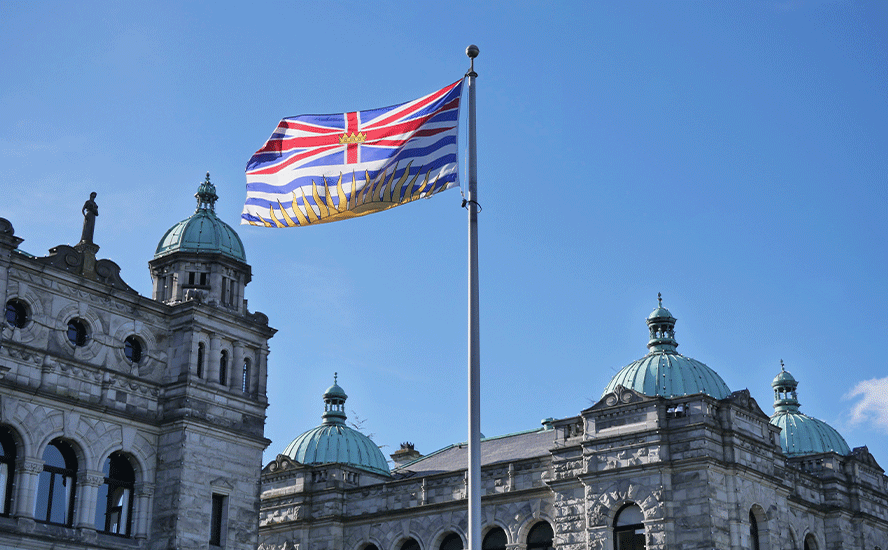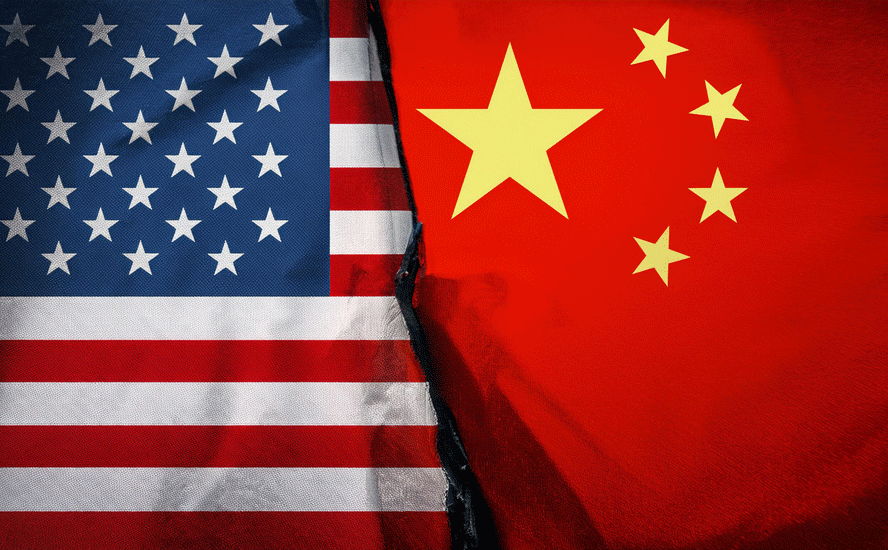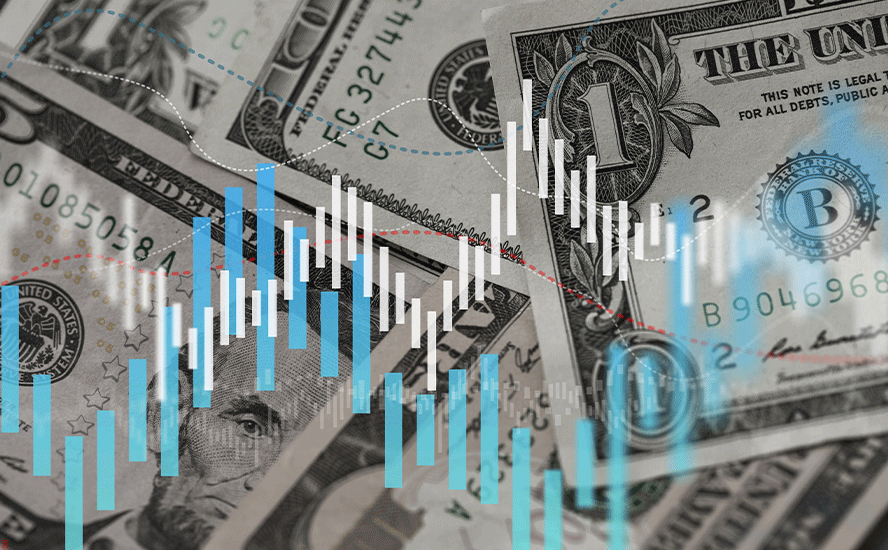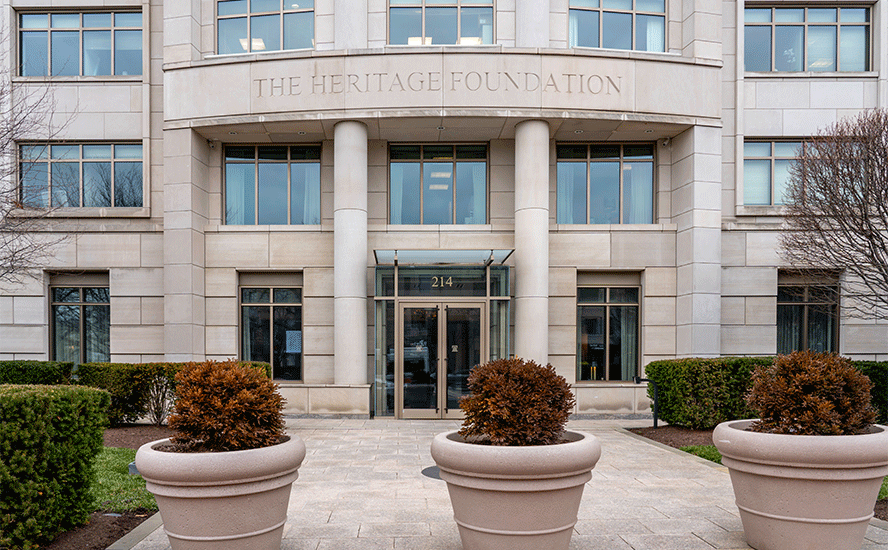The Fed Knew – Richard Mills
2023.03.30
Should we leave the creation of new money in the hands of bankers or place its creation solely with our government?
“The financial system used by all national economies worldwide is actually founded upon debt. To be direct and precise, modern money is created in parallel with debt…
The creation and supply of money is now left almost entirely to banks and other lending institutions. Most people imagine that if they borrow from a bank, they are borrowing other people’s money. In fact, when banks and building societies make any loan, they create new money. Money loaned by a bank is not a loan of pre-existent money; money loaned by a bank is additional money created. The stream of money generated by people, businesses and governments constantly borrowing from banks and other lending institutions is relied upon to supply the economy as a whole. Thus the supply of money depends upon people going into debt, and the level of debt within an economy is no more than a measure of the amount of money that has been created.” Michael Rowbotham, ‘The Grip of Death’
US Federal Reserve – the Fed
On the night of November 22, 1910 a delegation of the nation’s leading financiers, led by Senator Nelson Aldrich, left New Jersey for a very secret ten day meeting on Jekyll Island, Georgia.
Aldrich had previously led the members of the National Monetary Commission on a two year banking tour of Europe. He had yet to write a report regarding the trip, nor had he yet offered any plans for banking reforms.
Accompanying Senator Aldrich to Jekyll Island were:
- Frank Vanderlip, president of the National City Bank of New York, associated with the Rockefellers
- Henry P. Davison, senior partner of J.P. Morgan Company, regarded as Morgan’s personal emissary
- Charles D. Norton, president of the Morgan dominated First National Bank of New York
- Col. Edward House, who would later become President Woodrow Wilson’s closest adviser and founder of the Council on Foreign Relations
- Benjamin Strong, a lieutenant of J.P. Morgan
- Paul Warburg, a recent immigrant from Germany who had joined the banking house of Kuhn, Loeb and Company, New York directed the proceedings and wrote the primary features of what would be called the Aldrich Plan.
After the Jekyll Island visit the National Monetary Commission “wrote” the Aldrich Plan which formed the basis for the Federal Reserve system.
“In 1912 the National Monetary Association, under the chairmanship of the late Senator Nelson W. Aldrich, made a report and presented a vicious bill called the National Reserve Association bill. This bill is usually spoken of as the Aldrich bill. Senator Aldrich did not write the Aldrich bill. He was the tool, if not the accomplice, of the European bankers who for nearly twenty years had been scheming to set up a central bank in this Country and who in 1912 has spent and were continuing to spend vast sums of money to accomplish their purpose.” Congressman Louis T. McFadden on the Federal Reserve Corporation: Remarks in Congress, 1934
After several failed attempts to push the Federal Reserve Act through Congress, a group of bankers funded and staffed Woodrow Wilson’s campaign for President. He had committed to sign a slightly different version of the Federal Reserve Act than Aldrich’s Plan.
In 1913, Senator Aldrich pushed the Federal Reserve Act through Congress just before Christmas when much of Congress was on vacation. When elected president Woodrow Wilson passed the FED.
The Federal Reserve Bank (FED) is a privately owned company (Wikipedia describes the Fed as a complex business-government partnership that rules the financial world) that controls, and profits immensely by printing money through the US Treasury and regulating its value.
“Some [most] people think the Federal Reserve Banks are U.S. government institutions. They are not … they are private credit monopolies which prey upon the people of the U.S. for the benefit of themselves and their foreign and domestic swindlers, and rich and predatory money lenders. The sack of the United States by the Fed is the greatest crime in history. Every effort has been made by the Fed to conceal its powers, but the truth is the Fed has usurped the government. It controls everything here and it controls all our foreign relations. It makes and breaks governments at will.” Congressional Record 12595-12603 — Louis T. McFadden, Chairman of the Committee on Banking and Currency (12 years) June 10, 1932
“… we conclude that the [Federal] Reserve Banks are not federal … but are independent, privately owned and locally controlled corporations … without day-to-day direction from the federal government.” 9th Circuit Court in Lewis vs. United States, 680 F. 2d 1239 June 24, 1982
The FED began with approximately 300 people, or banks, that became owners (stockholders purchased stock at $100 per share) of the Federal Reserve Banking System. The Fed is privately owned – 100% of its shareholders are private banks, the stock is not publicly traded and none of its stock is owned by the US government.
The US government pushed through the Sixteenth Amendment(which exempted income taxes from constitutional requirements regarding direct taxes) restarted an income tax on Americans to pay the interest to the FED and reorganized the IRS to collect the monies – the interest – “owed” to the FED from its citizens.
Sir Josiah Stamp, president of the Rothschild Bank of England and the second richest man in Britain in the 1920s, said the following in 1927 at the University of Texas:
“The modern banking system manufactures money out of nothing. The process is perhaps the most astounding piece of sleight of hand that was ever invented. Banking was conceived in inequity and born in sin. Bankers own the Earth. Take it away from them but leave them the power to create money, and with a flick of a pen, they will create enough money to buy it back again. Take this great power away from them and all great fortunes like mine will disappear, for then this would be a better and happier world to live in. But if you want to continue to be the slaves of bankers and pay the cost of your own slavery, then let bankers continue to create money and control credit.”
The FED banking system collects billions of dollars in interest annually and distributes the profits to its shareholders – the interest on bonds acquired with its newly-issued Federal Reserve Notes pays the Fed’s operating expenses plus a guaranteed 6% return to its banker shareholders.
The US Congress gave the FED the right to print money at no interest to the FED. The FED creates money from nothing, loans it out through banks and charges interest. The FED also buys government debt with money from nothing, and charges U.S. taxpayers interest.
The FED is the only for profit corporation in America that is exempt from both federal and state taxes.
The Chicago Plan
In 1933, economists at the University of Chicago put forward confidential proposals to roughly 40 individuals concerning banking reform. After receiving feedback from a number of individuals the proposals were re-written, the supplement “Long-time Objectives of Monetary Management” was added as well as an appendix, “Banking and Business Cycles.”
Collectively, these recommendations have come to be known as the Chicago Plan.
Irving Fisher was a strong advocate.
“The Best Economic Minds In The Country devised a reform plan. Henry Simons from the University of Chicago created the proposal and prominent economists from other universities joined him in what became known as the “Chicago Plan.” Economists like Paul Douglas of the U of C.; Frank Graham and Charles Whittlesley of Princeton; Irving Fisher of Yale; Earl Hamilton of Duke; and Willford King of NYU, to name a few.” The 1930’s Chicago Plan Vs. The American Monetary Act,Stephen Zarlenga
The Chicago Plan called for only the government to be able to issue the currency – banks would no longer be able to create money by making loans.
“The essence of the 100% plan is to make money independent of loans; that is to divorce the process of creating and destroying money from the business of banking. A purely incidental result would be to make banking safer and more profitable; but by far the most important result would be the prevention of great booms and depressions by ending chronic inflations and deflations which have ever been the great economic curse of mankind and which have sprung largely from banking.” Irving Fisher
The Chicago Plan recognized the distinction between money and credit:
- The power to create money was to be removed from private banks by abolishing fractional reserves – the mechanism through which the banking system creates money
- The loan-making function (banks) was to be separated from the money-creation function (government). Bank lending was to be from deposited long-term savings
Although easily implementable the Chicago Plan was never seriously considered by the day’s government, instead, watered down alternative measures (institutionalized Federal deposit insurance and the separation of commercial and investment banking) were introduced in the Banking Act of 1935 which created the Federal Open Market Committee (FOMC) who were charged with controlling the money supply through open market operations using government securities.
After a mid-1930s recovery from the Great Depression the US again entered Recession in 1937-1938 and the key elements of the Chicago plan resurfaced in the July 1939 draft titled ‘A Program for Monetary Reform’, this document was never published and never resulted in legislation.
Conclusion
“It is time to part with the fallacy that economic growth and employment creation are the main duties of central banks…Economic agony and financial disorder will continue until central banks decide to rehabilitate monetary conditions and restore direct control of the money creation process.” Dust off the Chicago Plan, Hossein Askari and Noureddine Krichene, atimes.com
Milton Friedman wrote “The creation of fiat currency should be a government monopoly.”
Today monetary reform advocates are revisiting the 1933 ‘Chicago Plan’ and the 1939 ‘A Program for Monetary Reform’.
The Fed Knew
Interesting, for the first time ever the Fed lost money. The Fed has always gave a portion of it’s profits to the US Treasury (and its shareholders), but for the 1st time ever, last September, it was reported the Fed lost money, almost 3/4 of a trillion dollars on mark to market.
And everyone acted surprised at bank failures. “It came out of the blue” they said. Not hardly, the warnings were hiding in plain sight for all to see. The short of a lifetime and everyone missed it.
Maybe this is the real reason the Fed tried to cover up inflation as transitory, and would not act for so long, lol hope and prayer. The Fed knew full well what would happen to banks, and themselves if they started raising interest rates.
IT HAPPENED TO THEM!
“Down in the footnotes of the recently released financial statements of the combined Federal Reserve Banks for the second quarter of 2022, we find this startling disclosure: the mark to market loss on June 30 had increased to $720 billion. That’s a number to get your attention, even in these days of counting in billions, especially when compared to the Fed’s reported total capital on the same date of only $42 billion. The Fed’s mark to market or economic loss at the end of the second quarter was thus 17 times its total capital, making it deeply insolvent on a mark to market basis. (Woe to any bank supervised by the Fed which gets itself in the same situation! Oh yes, we know the Fed will earnestly insist that it is different, but that doesn’t change the fact of the market value losses.)”
Is it fair to say the Federal Reserve has failed America? I was watching TV the other night when an ad came on touting some drug. The disease could be cured by diet and exercise, of course most today would rather take a pill then responsibility. Anyway the announcer started reeling off all the side effects of this drug, it wasn’t long before I was staring up at the ceiling and the speakers voice had become Lucy’s teachers voice, yada yada yada blah blah blah, cancer, stroke, heart disease. I found myself thinking I’d rather have the disease then take the cure, it was fixable with some lifestyle tinkering.
https://Mikesmoneytalks.ca/chains-of-fiscal-disipline/
The next thing I thought of was the Gold Standard was like the disease – not so bad compared to the drug. The Gold standard was fixable and amenable to today, it would work, and it’s certainly preferable to the cure, the pill represented by fiat currency, the Federal Reserve, stock market crash’s, banking and sovereign crises, yada yada yada.
I think we all need to ask ourselves if the U.S., and the world, were better off when the dollar was backed by gold, and politicians, along with their bankster brethren, had to operate under the burden of gold’s chains of fiscal discipline. Or are we all doing so well now, are things so great, has the Fed with its limited monetary policies worked out so well that we don’t need gold backed money?
It’s time for monetary reform, we don’t need the Federal Reserve, what we need are gold’s chains of fiscal discipline. The fiscal discipline of a gold standard needs to be imposed on our dear leaders. This question should be on all our radar screens. Is it on yours?
Legal Notice / Disclaimer
Ahead of the Herd newsletter, aheadoftheherd.com, hereafter known as AOTH.Please read the entire Disclaimer carefully before you use this website or read the newsletter. If you do not agree to all the AOTH/Richard Mills Disclaimer, do not access/read this website/newsletter/article, or any of its pages. By reading/using this AOTH/Richard Mills website/newsletter/article, and whether you actually read this Disclaimer, you are deemed to have accepted it.

